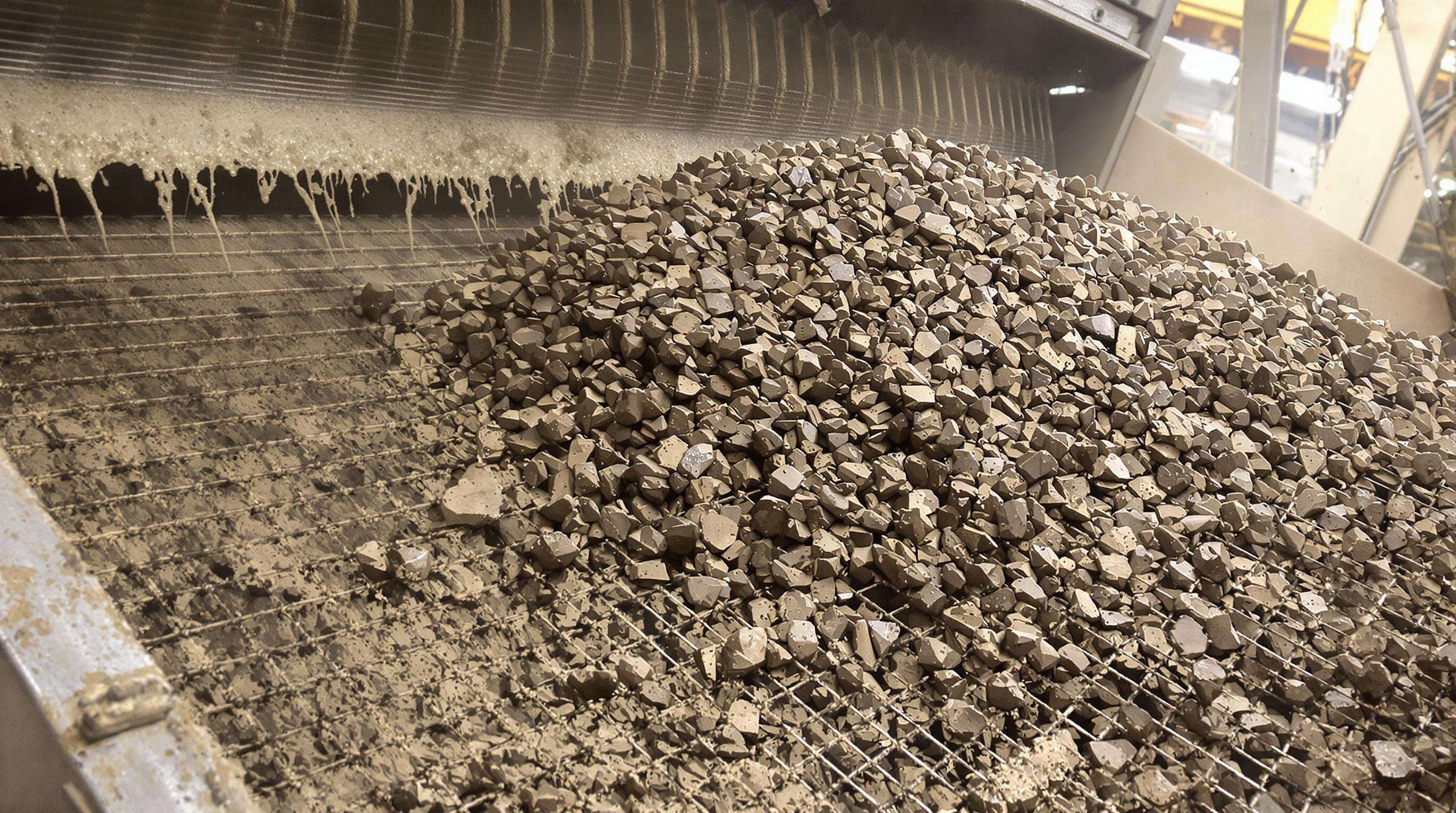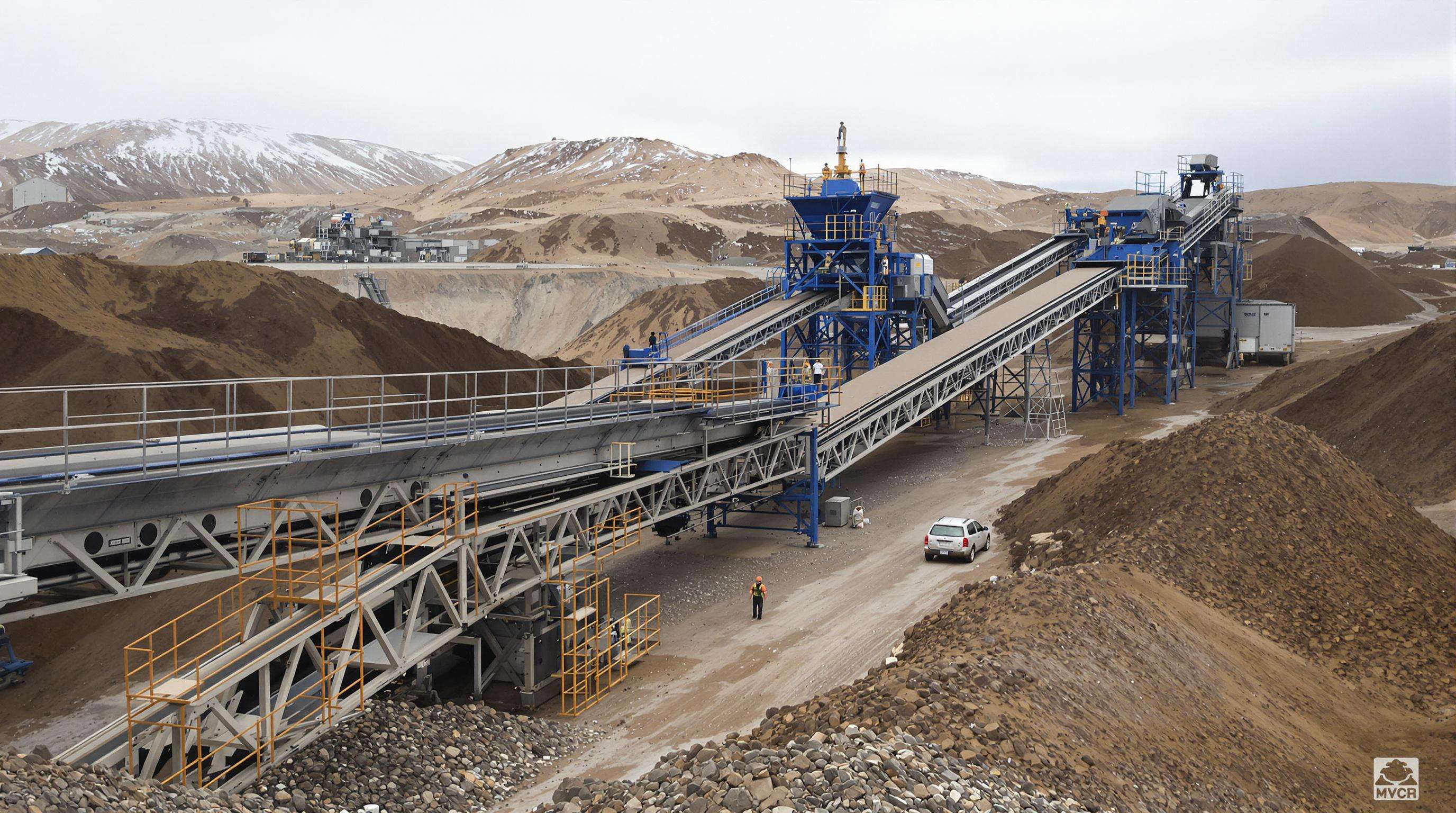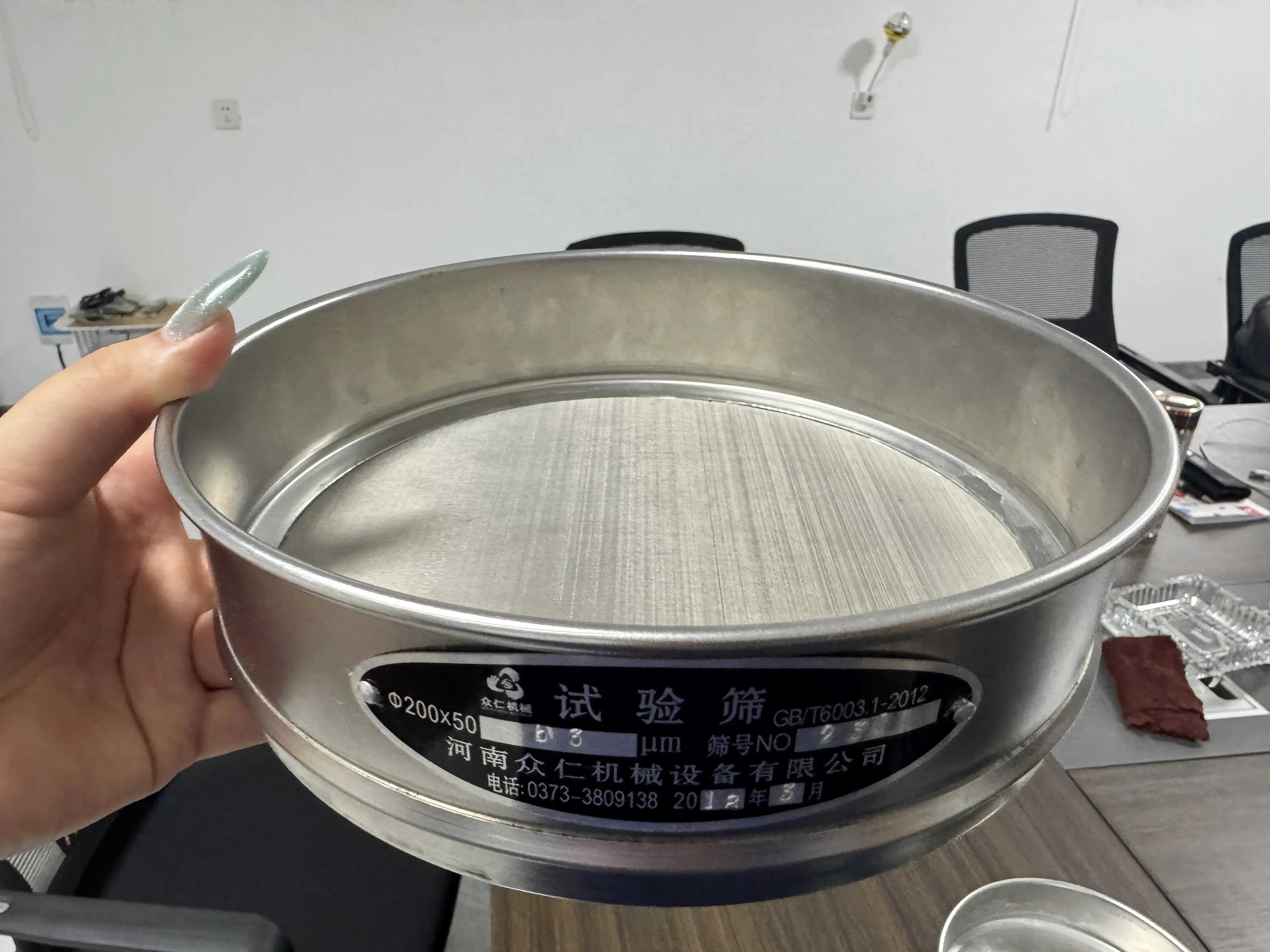Problemy związane z sortowaniem rudy i wymaganiami wydajności przy użyciu Maszyna do sita wibracyjnego

Współczesne operacje górnicze napotykają trudności w obsłudze materiałów podczas przetwarzania zróżnicowanych złóż rudnych o różnych wielkościach cząstek (0,5–150 mm) i zawartości wilgoci powyżej 12%. Tradycyjne sita wibracyjne napotykają problemy z zapychaniem przekraczającymi 18% przy materiałach o wysokiej zawartości gliny, co powoduje wąskie gardła w produkcji. Technologia sit wibracyjnych oscylacyjnych rozwiązuje te problemy dzięki:
- Dynamicznej regulacji amplitudy (zakres 2–8 mm) zapobiegającej tworzeniu się mostków materiałowych
- Modulacji częstotliwości (750–1500 RPM) dla optymalnej separacji cząstek
- Regulowanemu pochyleniu powierzchni sita (5–25°) w zależności od poziomu wilgotności
Te cechy zmniejszają konieczność konserwacji w trakcie zmiany o 40% w porównaniu z systemami wibracyjnymi liniowymi według benchmarków przetwarzania materiałów sypkich z 2023 roku.
studium przypadku: 35% wzrost wydajności

Główna kopalnia miedzi w Chile zmodernizowała obwody kruszenia poprzez zastosowanie sit obrotowych, osiągając:
| Metryczny | Przed instalacją | Po instalacji |
|---|---|---|
| Wydajność na godzinę | 220 ton | 297 ton |
| Zatykanie siatki sita | 6 czyszczeń/dobę | 1,2 czyszczenia/dobę |
| Zużycie w kierunku downstream w kruszarkach | 0,3 mm/miesiąc | 0,17 mm/miesiąc |
System utrzymywał skuteczność przesiewania na poziomie 98,4% podczas sezonowych wzrostów wilgotności (93% RH), przetwarzając rudę o zawartości gliny 14–18%.
Dostosowanie do sortowania materiałów ciężkich
Sita wahliwe doskonale sprawdzają się w sortowaniu materiałów ściernych, takich jak ruda żelaza (twardość Mohsa 5,8–6,5). Ich projekt z ruchomą deką tłumi uderzenia z cząstek o średnicy powyżej 50 mm, zmniejszając naprężenia konstrukcyjne o 62% w porównaniu z sitami o sztywnej ramie. Główne korzyści:
- interwały serwisowe dla części zużywanych wynoszące 900–1200 godzin (vs. standardowe 500 godzin)
- o 22% niższe zużycie energii (średnio 8,7 kWh/t)
- Zgodność z typowymi wysokościami przenośników (punkty wysypu 1,8–3,2 m)
Analiza zwrotu z inwestycji (ROI) w operacjach kopalni miedzi
Badania z 2024 roku przeprowadzone w sześciu kopalniach miedzi wykazały, że sita wahliwe zapewniają okres zwrotu inwestycji w ciągu 14–19 miesięcy dzięki:
- 68% redukcji kosztów wymiany paneli sit ($18 700 rocznych oszczędności)
- 9–15% poprawie odzysku metali dzięki lepszemu oddzielaniu drobnych frakcji
- 41% niższemu zużyciu energii w czasie szczytowym ($4,10/t redukcja kosztów)
Dzięki temu technologia ta odgrywa kluczową rolę w osiąganiu przez kopalnie kosztów operacyjnych poniżej $45/t.
Poprawa precyzji klasyfikacji kruszywa
Sita wahliwe osiągają dokładność klasyfikacji ±1,5 mm dzięki wielopłaszczyznowym siłom wibracyjnym, zmniejszając zanieczyszczenie nadmiarem o 83% w porównaniu do tradycyjnych sit. Kontrahenci osiągają zgodność na poziomie 92% z normami ASTM C33 dotyczącymi kruszywa betonowego dzięki temu systemowi.
Efektywność recyklingu odpadów z burzeń
Najnowsze dane pokazują, że instalacje sit wahliwych zapewniają:
| Metryczny | Wydajność |
|---|---|
| Wskaźnik odzysku metali | 97% |
| Czystość betonu | 89% |
| Prędkość przetwarzania | 45 tph |
Dzięki temu osiąga się 62% redukcję odpadów wysypiskowych – kluczowe w projektach LEED wymagających odzysku odpadów na poziomie 75%+.
Realizacja rozwoju miejskiego
W tokiońskiej strefie Shinjuku przy przebudowie stacji, sita wahliwe przetwarzały 1200 ton dziennych odpadów w ograniczonej przestrzeni. Kompaktowa konstrukcja (o 30% mniejsza niż w przypadku tradycyjnych sit) umożliwiła sortowanie na miejscu, obniżając koszty transportu o 18 USD/tonę i spełniając wymogi recyklingu – co przyczyniło się do o 22% szybszego zakończenia projektu.
Separacja odpadów komunalnych
Sita wahliwe osiągają 78% odzysku materiału – o 23% więcej niż sita bębnowe – dzięki zapobieganiu zapychaniu przy wilgotnych frakcjach organicznych i lekkich plastikach. Zakłady odnotowują 41% mniejszą ilość odpadów resztkowych, co umożliwia spełnienie unijnych celów dotyczących wysypisk z 2035 r.
Zwiększona recyclacja plastiku
Belgijskie przedsiębiorstwo zwiększyło czystość płatków PET z 88% do 97% dzięki wykorzystaniu trójwarstwowych sit wibracyjnych, eliminując sortowanie ręczne przy zachowaniu wydajności 22 tony/godz. Zanieczyszczenie spadło poniżej 0,8%, spełniając wymagania FDA dotyczące stopnia spożywczego bez stosowania mycia chemicznego.
Integracja automatycznego sortowania
Grawitacyjne sita wibracyjne integrują się z sortownikami AI, zmniejszając przestoje młynów rozdrabniających o 18%. Konstrukcje modułowe umożliwiają szybkie zmiany siatek do przetwarzania tektury, tworzyw sztucznych i gruzu budowlanego w zakładach sortowania odpadów.
Postępy w kontroli jakości nasion
Sita wibracyjne zmniejszają uszkodzenia nasion o 40% w porównaniu do tradycyjnych sit, zachowując zdolność kiełkowania. Zintegrowane czujniki optyczne osiągają dokładność klasyfikacji na poziomie 99,5%, jednocześnie spełniając normy czystości ISO 24048:2022.
Produkcja nawozów organicznych
Zakład kompostujący przetworzył 12 000 ton/rok odpadów zielonych na trzy frakcje dostępne na rynku przy użyciu sit wibracyjnych:
- <5 mm : Nawozy ciekłe
- 5-15 mm : Torby ogrodnicze
- >15 mm : Poprawki glebowe
Wzrost wydajności odzysku materiału z 68% do 92% przy o 25% niższym zużyciu energii w porównaniu do bębnów obrotowych.
Spójność granulacji proszku
Sit swingujące zapewniają precyzję ±0,5 mm w granulacji chemicznej, zmniejszając niejednorodność partii o 40% w porównaniu do sit obrotowych. Utrzymanie jednorodności na poziomie 98,7% przez 120-godzinne cykle, nawet przy higroskopijnych proszkach.
Konfiguracje odporną na wybuchy
Sit swingujące z certyfikatem ATEX dominują w przetwarzaniu materiałów niebezpiecznych dzięki:
- Pokryciom rozpraszającym ładunek elektrostatyczny (<30 mJ)
- Systemom blokad monitorującym zawartość tlenu (zatrzymanie przy 14%)
- Łożyskom ochronnym z zastosowaniem azotu
Wdrożenie technologii pozwoliło zmniejszyć liczbę wypadków z pożarami w zakładach chemicznych o 60%, jednocześnie wydłużając żywotność komponentów o 2,8 roku w środowiskach agresywnych chemicznie.
Wzrastające trendy
Wsparcie predykcyjne oparte na sztucznej inteligencji
Czujniki wibracji i kamery termiczne umożliwiają przewidywanie awarii łożysk z dokładnością 89% na 72 godziny przed ich wystąpieniem, co zmniejsza czas przestoju o 35% i koszty napraw o 18 USD/tonę.
Standaryzacja międzybranżowa
Jednolite protokoły dotyczące wymiarów otworów sit i parametrów wibracji pozwalają na wielokrotne wykorzystanie sprzętu w różnych lokalizacjach, skracając czas wdrożenia o 40%.
Ekonomia zrównoważonej produkcji
Modele energooszczędne osiągają zwrot z inwestycji po 19 miesiącach, mimo o 23% wyższych kosztów początkowych, z zużyciem energii na poziomie 7,2 kWh/t w porównaniu do 11,4 kWh/t w systemach konwencjonalnych.
Często zadawane pytania
- Jakie są zaletu stosowania technologii sit skrzydełkowych w górnictwie?
Technologia sit skrzydełkowych oferuje lepszą dokładność sortowania, mniejsze ryzyko zapychania oraz zwiększoną wydajność. Znacząco obniża potrzeby serwisowe i zwiększa przepustowość, co czyni ją idealną do przetwarzania materiałów o wysokiej zawartości gliny.
- W jaki sposób technologia sit skrzydełkowych wpływa na zrównoważony rozwój środowiskowy?
Technologia ta zmniejsza zużycie energii i wspiera gospodarkę odpadami dzięki poprawie odzysku materiałów, co sprzyja spełnianiu norm środowiskowych i ograniczeniu wykorzystania składowisk odpadów.
- Czy sita skrzydełkowe są w stanie obsługiwać materiały ściereczne?
Tak, sita skrzydełkowe skutecznie radzą sobie z materiałami ścierecznymi, takimi jak ruda żelaza, poprzez zmniejszenie obciążenia konstrukcji i wydłużenie okresów konserwacji części narażonych na zużycie.
- W jaki sposób technologia sit skrzydełkowych integruje się z systemami automatycznymi?
Sita skrzydełkowe mogą być łączone z systemami opartymi na sztucznej inteligencji, co poprawia procesy sortowania i skraca przestoje w zakładach zajmujących się różnorodnymi typami materiałów.
Spis treści
- Problemy związane z sortowaniem rudy i wymaganiami wydajności przy użyciu Maszyna do sita wibracyjnego
- studium przypadku: 35% wzrost wydajności
- Dostosowanie do sortowania materiałów ciężkich
- Analiza zwrotu z inwestycji (ROI) w operacjach kopalni miedzi
- Poprawa precyzji klasyfikacji kruszywa
- Efektywność recyklingu odpadów z burzeń
- Realizacja rozwoju miejskiego
- Separacja odpadów komunalnych
- Zwiększona recyclacja plastiku
- Integracja automatycznego sortowania
- Postępy w kontroli jakości nasion
- Produkcja nawozów organicznych
- Spójność granulacji proszku
- Konfiguracje odporną na wybuchy
- Wzrastające trendy
- Wsparcie predykcyjne oparte na sztucznej inteligencji
- Standaryzacja międzybranżowa
- Ekonomia zrównoważonej produkcji
- Często zadawane pytania

